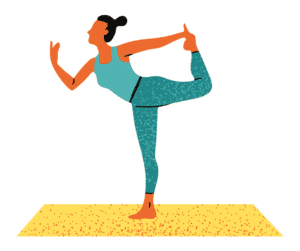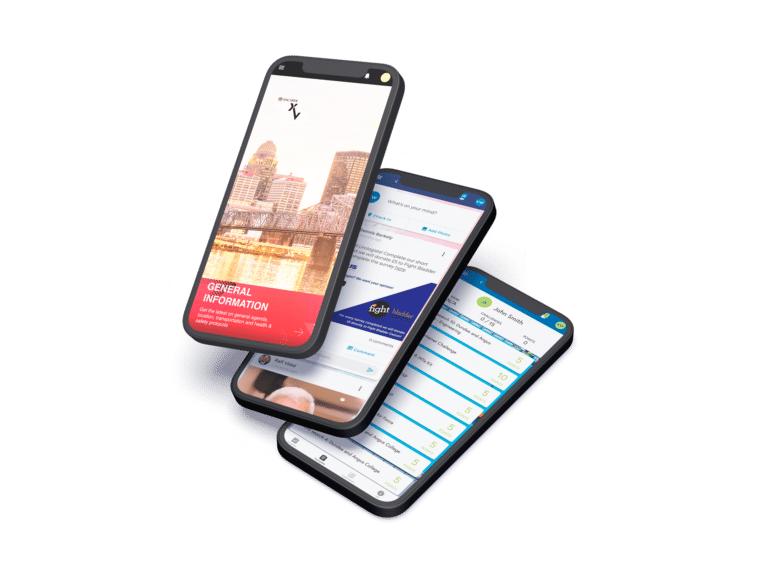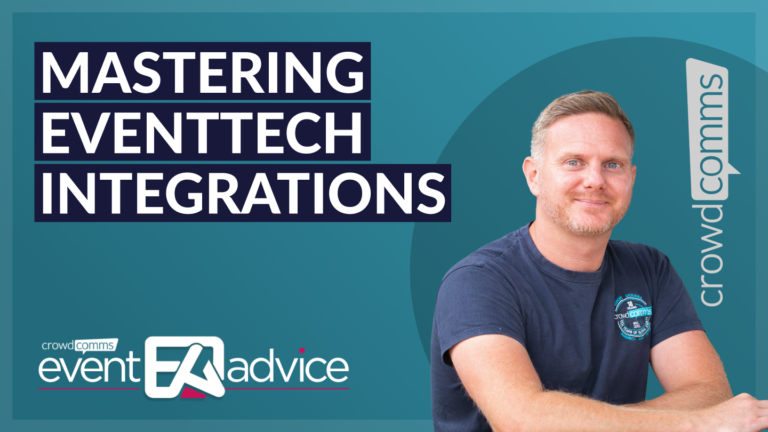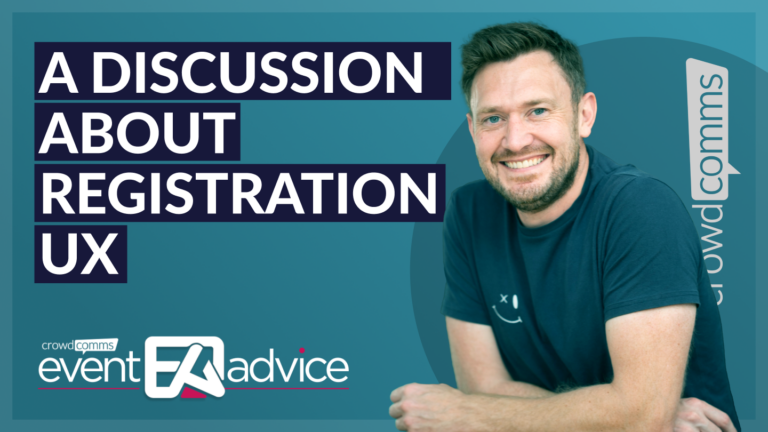Wellness might feel like a social media fad, but it’s actually a rapidly expanding, multi-trillion global industry. With 79% of consumers believing that wellness is important, should event wellness be a feature on your agenda?
The answer is an overwhelming, yes! Incorporating wellness in your next event can deliver a whole range of benefits to your attendees and stakeholders.
What Does Wellness Actually Mean?
It can be hard to untangle the concept of wellness from influencer culture. Across social media, thousands of high-profile wellness influencers can be found extolling the virtues of wellness. From extreme clean eating to bone-bending yoga poses that defy human biology, wellness can seem like the preserve of those who are both young and wealthy enough to spend the time and effort practising wellness ‘correctly’.
But, according to the Global Wellness Institute, wellness is a multi-dimensional state that encompasses, physical, emotional, mental, spiritual, social and environmental health. And most importantly, is available to all of us to actively pursue.
Wellness and Events
Achieving wellness for ourselves sounds like a great idea, however, why should event planners look to incorporate wellness-boosting elements into their event programme?
There is so much for attendees to gain from attending events, however, there can also be inherent challenges. Stresses being away from family or day-to-day work commitments, managing overload from complementary food and drinks, digesting a large amount of content in a relatively short space of time, and making sure the right networking connections are made, or feeling excluded due to cultural or social differences. They’re all elements that can hinder attendees’ ability to fully engage with event content.
This is where wellness comes in. In short, incorporating event wellness into your schdule has the potential to help achieve important event outcomes, including:
- Creating more energetic and focused audiences
- Reducing stress for attendees and helping them to fully engage with the event content
- Providing a sense of connection between attendees
- Ensuring every attendee feels welcome and included
- Delivering high attendee event satisfaction
Let’s take a look at how this can be achieved:
1.Movement
Sitting is often unavoidable at some events. Speaker sessions, keynote addresses and presentations may require attendees to stay seated for extended periods. Sitting for a long time can be uncomfortable which may lead to distraction and lethargy; neither of which are conducive for an engaged audience.
Keeping attendees on the move throughout an event will maintain energy levels and active brains. Even small movement can have an immediate impact. A brisk walk to the next session can release feel-good endorphins, increase blood flow to muscles and relieve aching joints.
Even simple stretches combined with deep breathing can help lower heart rates and blood pressure.
How
If you have the time and the event budget, incorporating dedicated exercise sessions, such as yoga, into the agenda will be a big benefit. However, this not only takes up time and space, but it also may not suit every attendee.
Encouraging small amounts of movement throughout the event day can help every attendee and is relatively easy to include in an event schedule:
- Create a short stretching exercise guide and store it in your event app. Send pop-up notifications during the day to remind attendees to stretch!
- Space session rooms apart so attendees can have a short break for a brisk walk.
- Use alternative session ‘seating’ options such as standing spaces, bar height tables and even yoga balls!
- If speakers spot disengaged attendees, a quick breathing exercise can get the session back on track.
Benefits
Energised attendees who engage with each session, from first to last.
2. Food and Drink

A serious highlight for many attendees, event catering is often approached with the same enthusiasm normally reserved for the holiday breakfast buffet!
While it’s great to delight attendees with a table groaning with goodies, carb and sugar-laden options run the risk of sapping energy and concentration. They can also affect mood by inducing “sluggishness, irritability and disinterest.”
Creating thoughtful catering options that boost mood and energy levels (and keep them stable throughout the event) will help attendees feel fresh and focused.
How
Healthy nutrition doesn’t have to be joyless; nobody wants to feel like they’re being lectured to at the lunch table!
Stick a few simple principles for healthy menus that event attendees will love:
- Bread gets a bad (w)rap – excuse the pun-, but low GI wholegrain options for rolls and sandwiches are a slow-release energy source that avoid the high carb spikes and slumps of white bread. The same goes for brown rice and wholegrain pasta.
- Protein is the master of filling us up but not weighing us down. Lean proteins such as tuna, tofu, and chicken breast are tasty choices for light meals that will stave off hunger pangs.
- Colourful fruit and vegetables not only taste great, but they’re also super appealing too. Whether raw, grilled, or roasted – plants can multi-task as side dishes, appetisers or even the main event.
- Healthy dessert isn’t an oxymoron! Satisfy sweet tooths with fruit-based yoghurts, parfaits and gelatos. Or include indulgent sweets such as brownies and cupcakes in bite-sized potions.
- Keep attendees hydrated by placing plenty of water stations around the venue.
Tip: include catering menus in your event app so attendees can plan ahead and avoid feeling overwhelmed at meal times. Highlight options suitable for those with intolerances and allergies.
Benefits
Attendees have sustained energy to stay engaged throughout the event. Filling but light menu choices side-step post-meal energy slumps – which will no doubt be appreciated by speakers taking on the afternoon shift!
3. Natural Elements

With many events taking place indoors, attendees may be exposed to long periods of artificial light and recirculated airflow.
Artificial light is perfectly fine and poses no risk to health. However, the human body relies on daily patterns of light waves to make us alert at the start of the day (blue light waves) and to relax us before sleep at the end of the day (red light waves). The light waves found in natural light also affect our mood, energy and metabolism.
Most event buildings will adhere to safe standards of clean air circulation; however, the psychological benefits of natural airflow can make it worth getting attendees outdoors or opening the windows to bring fresh breezes inside.
How
Event planners and venues don’t need to re-engineer their plans to incorporate natural elements within an event. Make use of what is available to connect attendees to nature:
- An obvious starting point is to give attendees time outdoors. If your venue has access to safe outdoor spaces, encourage attendees to make use of their breaks to soak up some natural rays and fresh air.
- If indoors is the only option, plenty of light (with blue/white tones) will help attendees feel alert and energised.
- If there are minimal windows or natural light sources, use mirrors and reflective surfaces to boost light intensity and create a feeling of space.
- Lucky enough to have an event venue by the coast or outside the city? Opening windows and doors can improve airflow, air quality and introduce natural scents (such as sea salt or garden flowers) to the event space.
- In addition to light and air, think about arranging plants and flowers around the venue. Plants can have an immediate and powerful impact on our mood and stress levels. According to the Washington Post, “Our connection to plants is so strong that sometimes it takes only a few minutes of being in their presence to start feeling better”.
Benefits
Introducing natural elements to the event schedule and venue can have a significant and positive impact on attendees’ moods and stress levels. These feel-good factors will boost engagement and leave audiences with a feel-good vibe post-event.
4. Presentations and Scheduling

Events can deliver a LOT of information in a relatively short space of time. While that information will be of great interest to attendees, our brains can only take in so much before becoming overloaded. 20 minutes is about the longest we can sit and absorb information without getting restless and distracted.
For attendees who want to soak up as much event content as possible, this can be frustrating and even stressful. And of course, most speaker sessions need to run for longer than 20 minutes to deliver a worthwhile presentation that covers a sufficient amount of content.
How
Creating a balanced agenda and sessions with varied presentation and participation styles will help attendees tune in but not drop out:
- Aim for a maximum of 6 hours of content delivery per day with sessions of varying length (preferably no longer than 90 minutes each).
- Provide enough time between sessions for attendees to take that all-important stroll, plus digest what they’ve learned, and clear some mental space before the next session.
- Brief presenters on what’s available to them to create dynamic and engaging real-time presentations: interactive live polling and Q&A, break-out groups, videos and visuals can all help to keep energy and engagement high. This is also useful for accommodating all types of learning styles.
- Make use of virtual streaming or pre-event videos in your event platform to deliver content before or after an event. This is useful for reinforcing messages of enabling attendees to catch up on any items they may have missed.
- Have supporting documentation (such as abstracts) available in your event platform, so attendees can easily access and read at a time when it suits them.
Benefits
Supporting attendees’ natural ability to absorb information means they’ll get more from the event content in a way that’s less of a brain strain.
5. Inclusivity

Feeling included is strongly linked to general well-being. If we feel socially excluded or even rejected, it can impact our cognitive sharpness and confidence. Diverse communities, such as people with disabilities, often feel particularly susceptible to social exclusion and rejection – in overt or subtle ways.
Diversity can be relative to any given environment, but it’s highly likely that most events will be attended by a significant number of people from diverse communities. To ensure that every attendee feels welcome and included at events, planners and organisers must consider diverse needs and access requirements, as well as commit to upholding a safe and respectful environment.
According to Forbes magazine, “When people are regularly reminded that they belong, they are likely to give their best, think clearly, feel safe to express their views and ideas and be happier, engaged and supportive of others, too.”
How
Creating an inclusive environment where differences are supported will help every attendee feel respected and included:
- A designated multi-faith prayer room available to access throughout the event enables attendees to meditate or pray as required or needed.
- Discuss food and drink sensitivities with event caterers and make sure there are suitable choices for attendees who may have dietary requirements for religious or allergy reasons.
- Draft an inclusive event policy statement that outlines the event organisers’ commitment to an inclusive event where every participant is treated with dignity and respect. Make the policy available via your marketing communications and event app.
- Review accessibility provisions with your event venue to ensure attendees with disabilities have full venue access, including bathrooms.
- Consider what additions can be made to ensure content is accessible to everyone. For example, providing session translators who can use sign language, audio and visual session recordings or written transcripts.
Benefits
When every attendee feels truly welcome at an event, it not only optimises engagement and participation, it strengthens event branding and reputation for socially responsible policies and actions.
In Summary
More than a passing trend, wellness is a movement that has the potential to make a real and important impact on our physical and mental health.
Event wellness means harnessing this idea and applying it to many aspects of an event.
By taking care to provide healthy nutrition, a balanced agenda, an inclusive environment, natural elements, and opportunities to move – event planners and organisers will deliver an event where attendees can feel great about their event participation and engagement.





